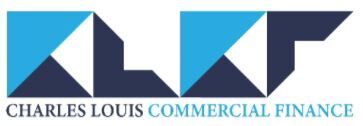What fees do I have to pay?
Bridging finance costs are broken down into:
Interest
This would be the cost of interest charged over the duration of the loan. We have a comparison table on this page which shows the amount of interest chargeable from different lenders. As a general rule, bridging finance interest rates are roughly three to six times more expensive than long-term mortgage interest costs.
Lender arrangement fee or product fee
This fee is charged for arranging the bridging finance. Often this fee is added to the total loan. If this is the case, you don’t have to pay the arrangement fee upfront. Some lenders may want part of the arrangement fee paid upfront. Lender arrangement fees are usually between 1-2% of the loan amount. Lenders have varying policies. If you work with us, we will tell you what requirements each lender will have.
Broker fee
The broker fee is payable for arranging the finance. Brokers often charge between 0.5% and 1% of borrowings once the loan has completed. NOTE: we do NOT charge broker fees for bridging finance. Instead, we are given a proportion of the lender arrangement fee.
Upfront broker fee
Occasionally brokers charge an upfront fee for processing your bridging finance application. This is done to reduce ‘time wasters’. NOTE: We do NOT charge upfront fees.
Surveyor valuation fee
The valuation fee is payable when the property you want financed gets valued by a qualified surveyor. They are assessing the suitability of the property you’re using as security against the loan you want to take out. Before surveys are undertaken, we make sure your application is properly ‘packaged’. This means your application has the correct information and associated documentation for the lender to process quickly.
Legal fees
Lenders usually require separate legal representation, which is paid for by the applicant. Some lenders will accept dual representation (use of the same solicitor for both sides), which can save time and money.
Exit fee
Some lenders charge an exit fee. This can be 1% to 2% of borrowings, or one month’s interest if a bridging loan is repaid earlier than agreed. Exit fees are generally charged on repayment of the loan and are added to the total redemption figure. We will always tell you if a lender has an exit fee.
Overview on costs and fees
When assessing the best lending source, it’s obviously sensible to add up all fees and interest costs over the duration of your bridging finance deal.
Finally
We will always give you a breakdown of total costs with any bridging finance deal so you can make an objective decision.
Example deal and fees
There are a number of extra fees that you will pay on a bridging loan vs a mortgage and here are some examples;
- For the initial valuation
- Arrangement or facility fee (up to 2%)
- Lender legal fees
- Exit fee (up to 2%)
- Interest per month
- Many more depending on the lender.
This shows how different a bridging loan is to a traditional mortgage because of all the extra costs that work out to be a lot! You can end up paying back interest plus 3-5% of the loan also in fees!
Structure of a bridging loan ?
Again very different to a traditional mortgage, typically the fees and interest you pay are taken off what’s called the ‘gross advance’. So if you got a 70% LTV on a £100,000 property you would be able to borrow £70,000 and this would be your gross advance.
However this does not mean you will NET £70,000 day one. All the fees mentioned above usually come off this before you are given the money. Here is a table to explain.
Property price | £100,000 |
LTV % | 70% |
Gross Advanced | £70,000 |
Arrangement fee | 1% = £700 |
Interest – 0.75%pm | 9 months – £525 per month = £4725 total |
Total fees | £6,475 |
NET Day 1 | £65,275 |
There are also some other structures that can be used in bridging loans, lenders will all differ as to what they offer. This is what makes bridging such a useful tool because there are so many different products.
In the table above we show the typical structure where the interest is deducted from the gross advance. However there are some structures where you can ‘roll up’ your interest and pay it off at the end. Because of this though, the loan sizes increases each month and so will your interest. Here shows how your interest will increase each month.
Month 1 interest = 0.75% of £70,000 | = £525 (total) |
Month 2 interest = 0.75% of £70,000 | = £1050 (total) |
Month 3 interest = 0.75% of £70,000 | = £1575 (total) |
Month 4 interest = 0.75% of £70,000 | = £2100 (total) |
Month 5 interest = 0.75% of £70,000 | = £2625 (total) |
Month 6 interest = 0.75% of £70,000 | = £3150 (total) |
This structure is still only used when the total loan amount at the end still amounts to less than 75% LTV.
FAQ
- What’s the difference between a regulated bridging loan and unregulated one?
- What bridging fees are there?
- What is the Bridging Maximizer™
- What is the ‘better than published’ promise?
- What does ‘No broker fees’ mean?
- What is the rate match guarantee?
- Can I get a better deal if I contact lenders directly?
- What is bridging finance?
- What are the pros and cons of bridging finance?
- What does a lender need to know about you, the borrower?
- What is LTV?
- What is first and second charge lending?
- What is light / medium / heavy bridging development finance?

